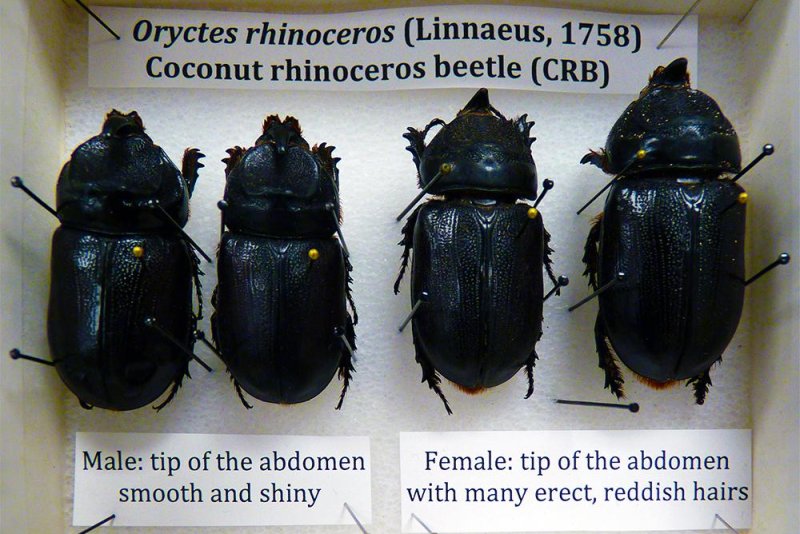Grad students at Wichita State are working to help local Hawaiians properly identify coconut rhinoceros beetles, a scarab pest species threatening coconut palms on the islands. Photo by Wichita State University
WICHITA, Kan., July 19 (UPI) -- Coconut beetles have already destroyed half the coconut palms on the island of Guam. Now, the invasive beetle has made its way to the Hawaiian island of Oahu.
In an effort to thwart the destructive insect, students at Wichita State University's Bug Lab are teaming up with local entomologists to help local Hawaiians identify the pest.
The Oryctes rhinoceros, also known as coconut rhinoceros beetle, is just one of 50,000 scarab beetle species. Though only a few of the over 70 scarab species currently found in Hawaii are native, the majority of scarab beetles aren't destructive -- and several are endangered.
With funding from the USDA, Wichita State students built a website and app called Hawaiian Scarab ID, to help local Hawaiians differentiate coconut rhinoceros beetles from other scarab beetles. The website and app offer a scarab beetle identification key.
"Unless you're really familiar with the species, they're easy to confuse," Josh Dunlap, a grad student at Wichita State, said in a news release. "Since there were no other tools to help people identify pests from non-pests, we went ahead and worked with the USDA to create one."
The beetles can fly several miles at a time and also hitch a ride on cargo carried by boats and airplanes. Once established, they can quickly wreak havoc on palms, boring into the tree's crown and eating the heart of the palm.
In addition to being an ecological menace, the pest is also a serious economic threat. Coconuts and coconut products are important source of revenue for Hawaiians. The iconic tree is also of significant value to owners of resorts and golf courses on the islands.
"We're in an agricultural state, so we can understand some of the problems Hawaii is having," said Mary Liz Jameson, an assistant entomology professor who helped students develop the online identification tools. "If a big monster like this arrived in Kansas, we would be all over it."
Once identified, property owners and wildlife managers can take steps to eradicate the beetle and prevent the pest from establishing itself and spreading further. One of the primary ways to prevent the beetle from establishing a viable population is by burning mulch piles -- a preferred breeding ground.
"Hopefully what we've done is created a tool that people can immediately identify it and put up a red flag warning to stop it from establishing," Jameson said.















